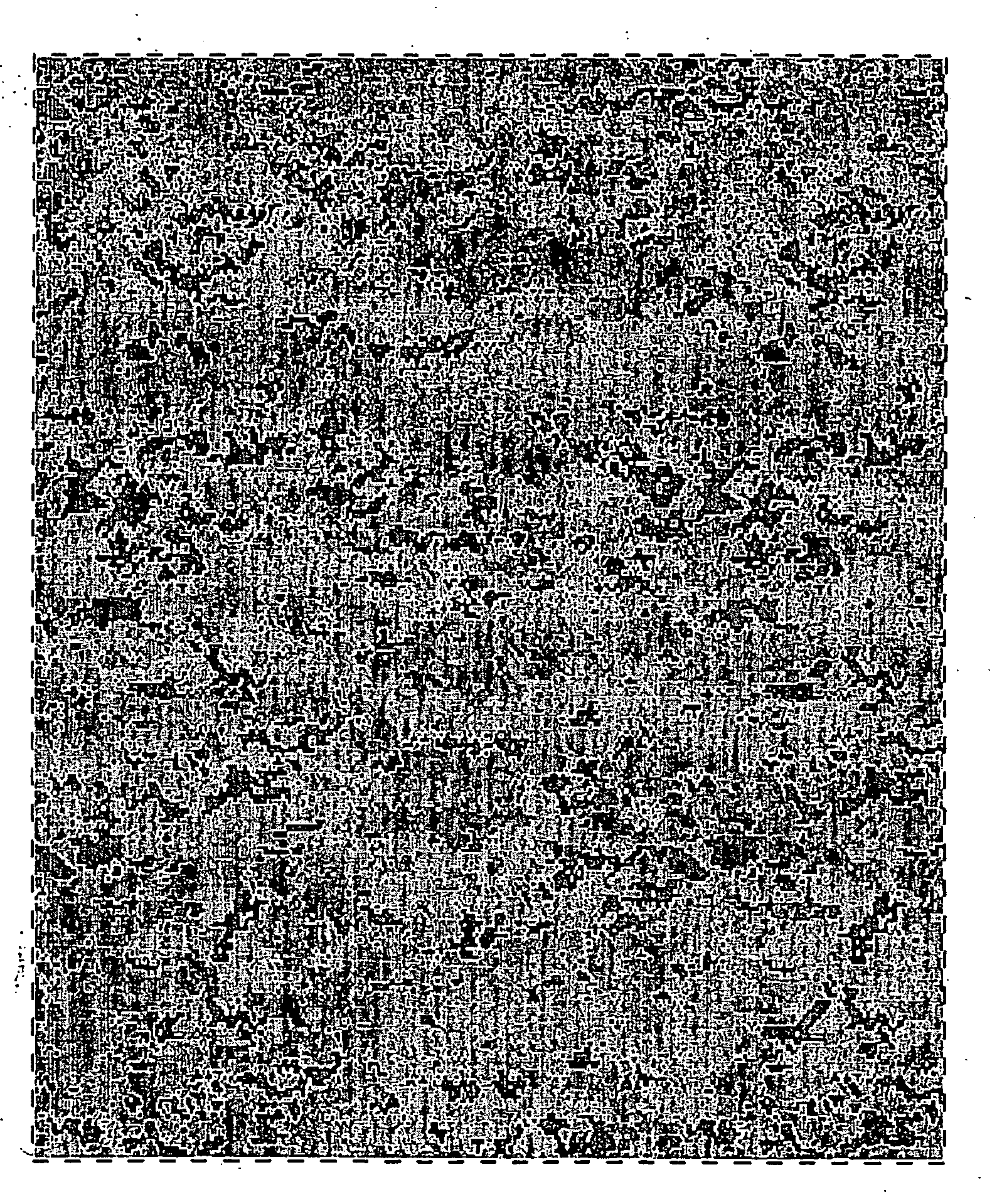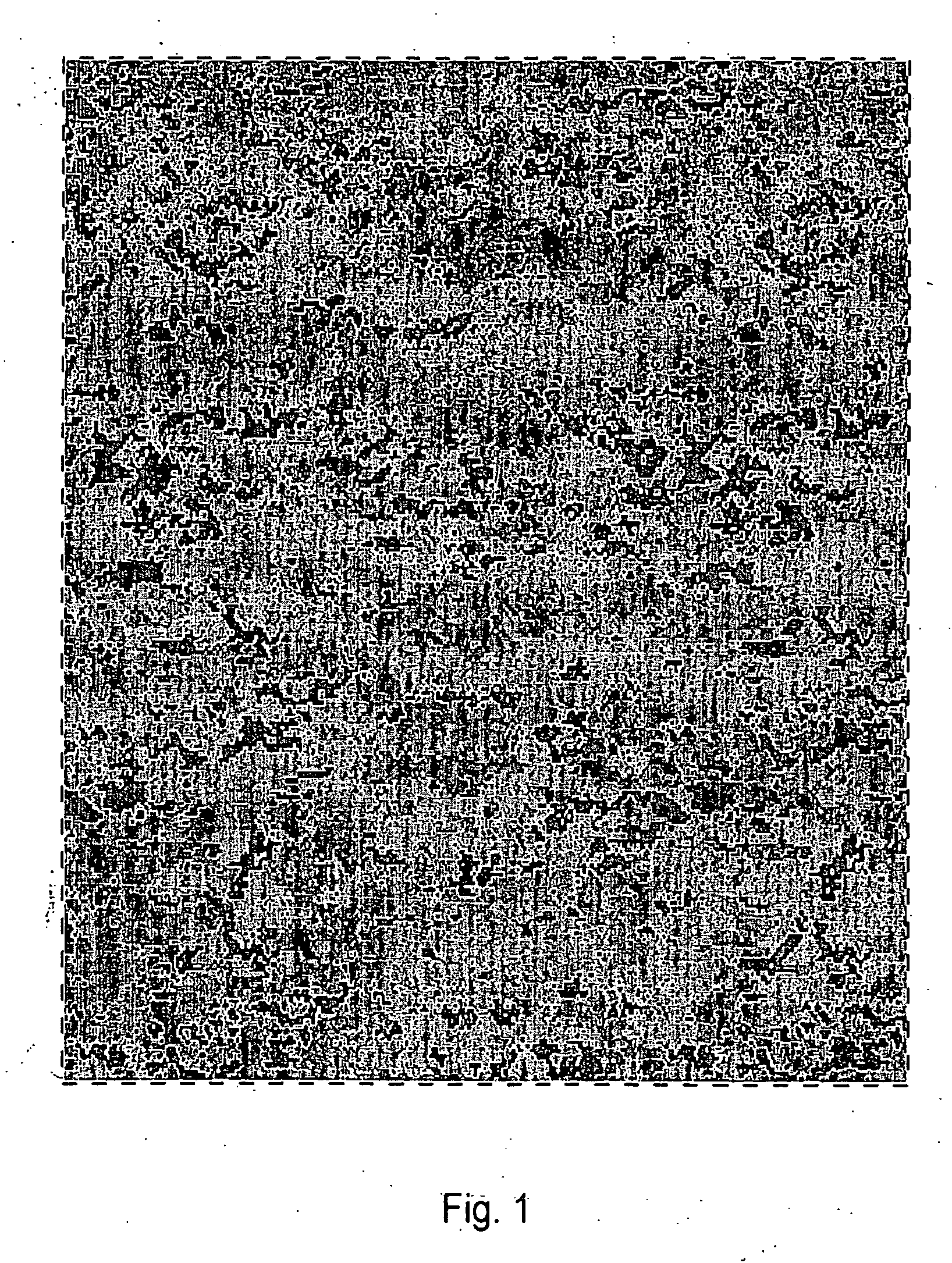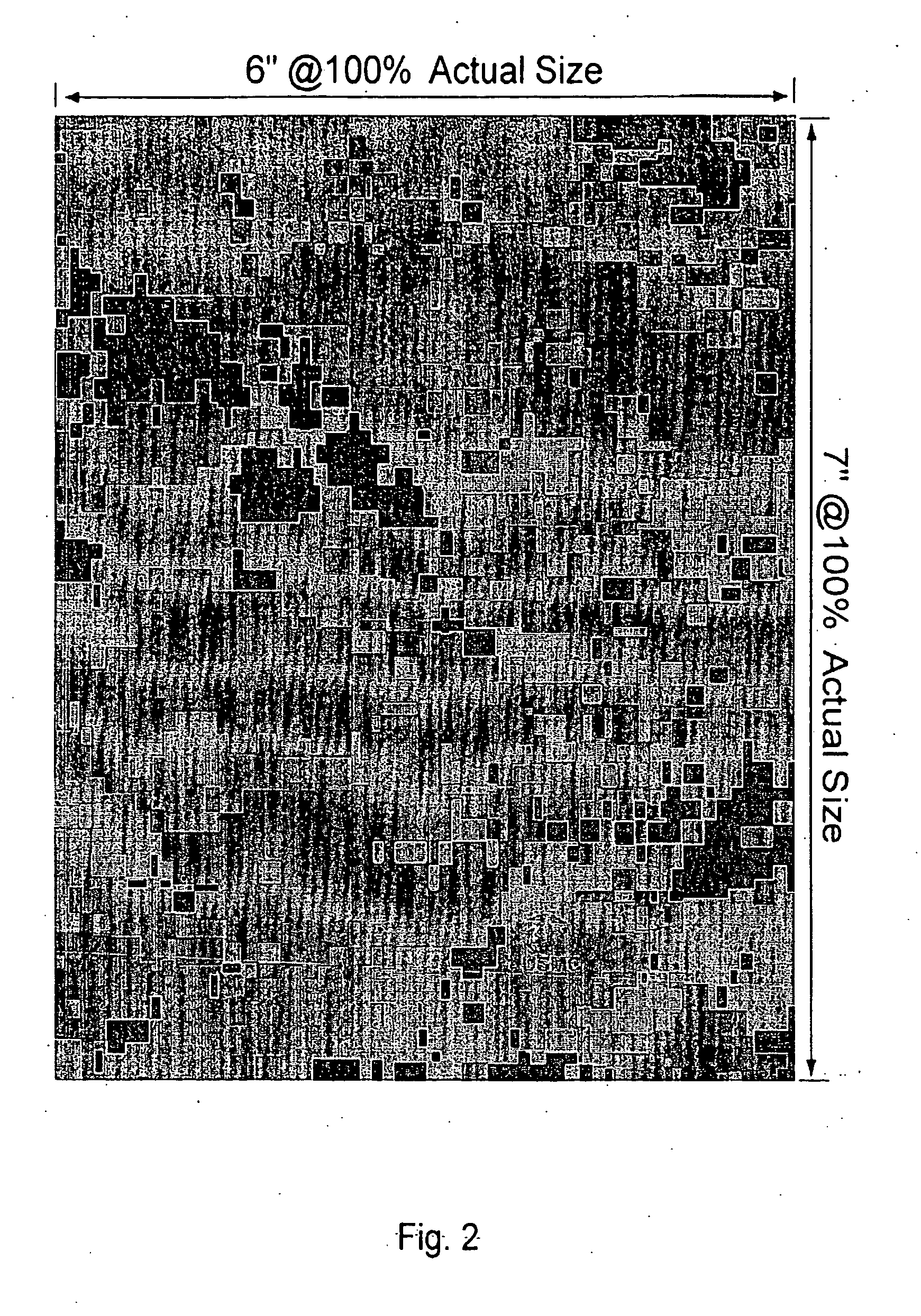Camouflage U.S. Marine Corps combat utility uniform: pattern, fabric, and design
a technology for marine corps and combat utility uniforms, applied in the field of camouflage patterns, can solve the problems of difficult to see objects as one thing, shorten the “pattern” of organisms, so as to improve the protection of users, improve camouflage advantages, and improve wear characteristics
- Summary
- Abstract
- Description
- Claims
- Application Information
AI Technical Summary
Benefits of technology
Problems solved by technology
Method used
Image
Examples
utility uniform embodiment
[0083]New garment designs were developed to provide the Marines with a more functional (combat utility) durable and easy care uniform. Referring to FIGS. 4 & 5, the uniform 40 is a 2-piece blouse 42 and trouser 43 design to optimize fit and maximize freedom of movement and ventilation. The blouse and trousers are each available in 26 sizes to fit 90 percent of the USMC population.
[0084]The blouse has a COLLAR 411 designed to enable Marines to close out the elements (i.e. sand and wind) in the stand-up position yet lie flat under body armor in the fold-down position without bunching. The area of the collar also provides sufficient area for placement of rank insignia 412.
[0085]CHEST POCKETS 49 are angled at approximately 65 degrees to improve ergonomics making it easier for hand entry and content retrieval. Hook and Loop closures are provided for all pockets to eliminate any closure impression and abrasion point associated with armor and load bearing wear. Velcro (hook & loop) type cl...
example 1
[0097]Greenwood Mills spun yarn made from a blend of 50+ / −5% polyamide (nylon type 6,6) manufactured by Dupont as type 420, with a denier per filament of 1.6-1.8, and the remaining percentage combed American Uplands cotton. The yarn for the fabric warp was 20 cotton count, two-ply, and the yarn for the fabric filling was 16 cotton count, singles. Greenwood Mills wove the fabric in a 2 / 1 left-hand twill. The fabric was desized, scoured, dyed and printed by Bradford Dyeing Association. The greige material was dyed the ground shade of Khaki 475 using the appropriate amounts / combinations of Acid Blue 258 and Tectilon Orange GV4R and than overprinted with vat dyes (Vat yellow 2, Vat green 1, Vat brown 57 and Vat Orange 6, and Sulfur black 6) using rotary screen printing process for each of the 3 remaining colors (green 474, coyote 476, and black 477) for the woodland camouflage pattern. The camouflage printed and finished cloth had the following properties: Weight—6.5 oz / yd2; Breaking St...
example 2
[0098]Same as above except that the instead of using plain polyamide, a fine denier carbon core polyamide sheathed fiber or other electrostatic dissipating fibers are added to the fiber blend resulting in a total of 1 to 5% electrostatic dissipating fibers.
PUM
| Property | Measurement | Unit |
|---|---|---|
| size | aaaaa | aaaaa |
| colorfastness | aaaaa | aaaaa |
| wavelengths | aaaaa | aaaaa |
Abstract
Description
Claims
Application Information
 Login to View More
Login to View More - R&D
- Intellectual Property
- Life Sciences
- Materials
- Tech Scout
- Unparalleled Data Quality
- Higher Quality Content
- 60% Fewer Hallucinations
Browse by: Latest US Patents, China's latest patents, Technical Efficacy Thesaurus, Application Domain, Technology Topic, Popular Technical Reports.
© 2025 PatSnap. All rights reserved.Legal|Privacy policy|Modern Slavery Act Transparency Statement|Sitemap|About US| Contact US: help@patsnap.com



